The BioBoundary of artificial scent marks that the BotswanaPredator Conservation Trust is developing to keep endangered African wild dogs safely inside protected wildlife areas will mimic the scent signals that the wild dogs use to avoid trespassing on the core areas of one another’s home ranges. Field researcher Megan Claase’s discovery that the dogs have special scentmarking sites that they share with other packs (see the previous blog https://bpctrust.org/blog/breakthrough-in-botswana-shared-scent-marking-sites-are-the-key-to-communication-between-african-wild-dog-packs ) was a crucial step in understanding how African wild dog packs organize their movements.

Botswana PredatorConservation Trust field researcher Megan Claase setting up a one of the Browning camera traps funded by St Louis Zoo WildCare Institute at an African wild dog scent marking site.
Monitoring the original marking site intensively with camera traps provided strikingly clear evidence that the four packs that used the site were exchanging scent messages by leaving faeces and urine there. Now, to get the full picture of how scent marking and wild dog movements are related, we need to know how many marking sites there are, their locations in relation to home ranges and movements, how often the dogs visit, and whether their behaviour differs between sites. All of that depends on our being able to monitor marking sites all over a wild dog pack’s home range. Thanks to generous support from the St Louis Zoo’s WildCare Institute (https://www.stlzoo.org/conservation/wildcare-institute) we have now expanded our camera trap monitoring from three sites to 14, with 35 cameras instead of 9, and the extra coverage is already yielding exciting new results.
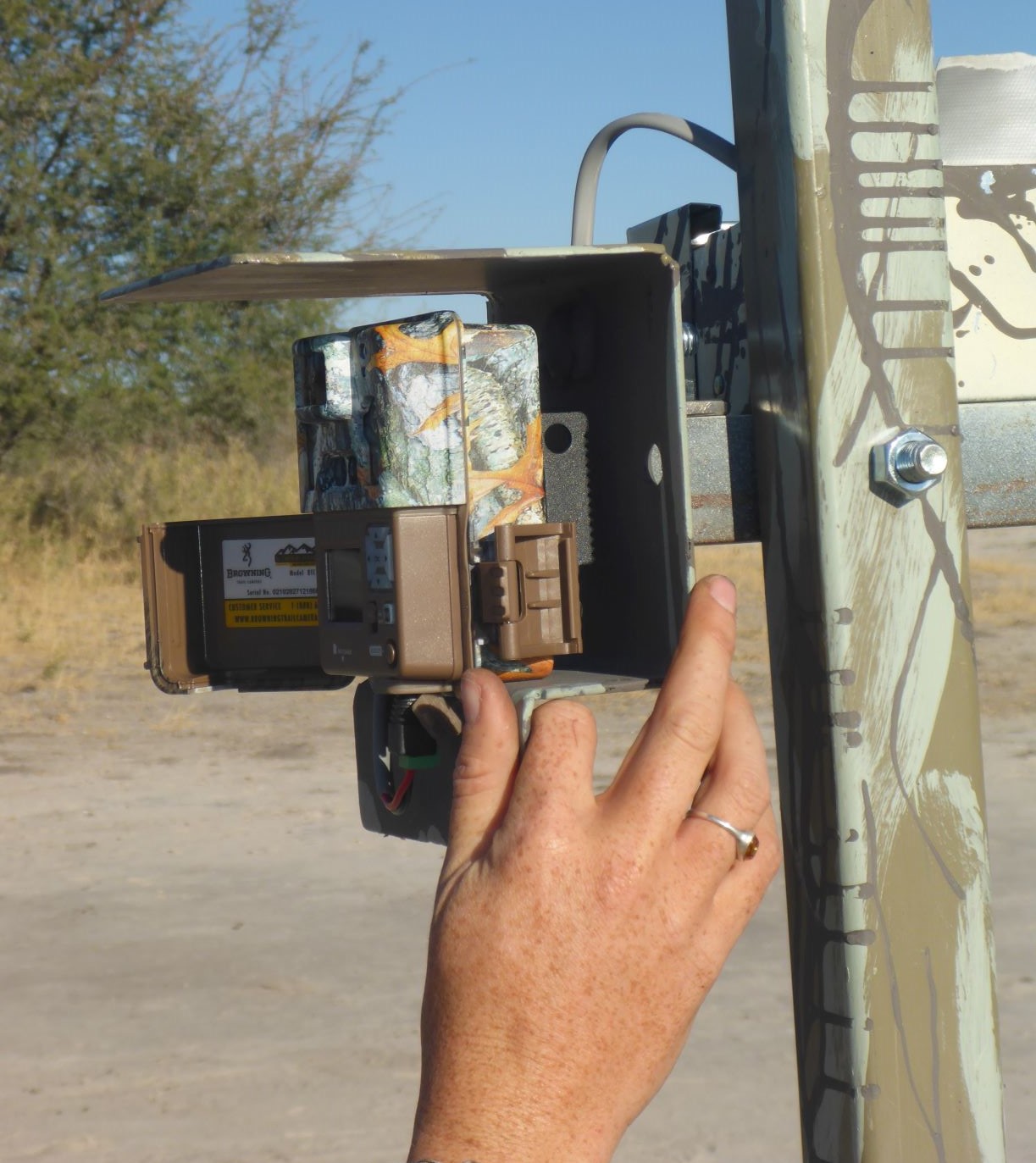
Final setting checks on a Browning camera trap before it is bolted into its protective housing and left to monitor activity at an African wild dog scentmarking site.
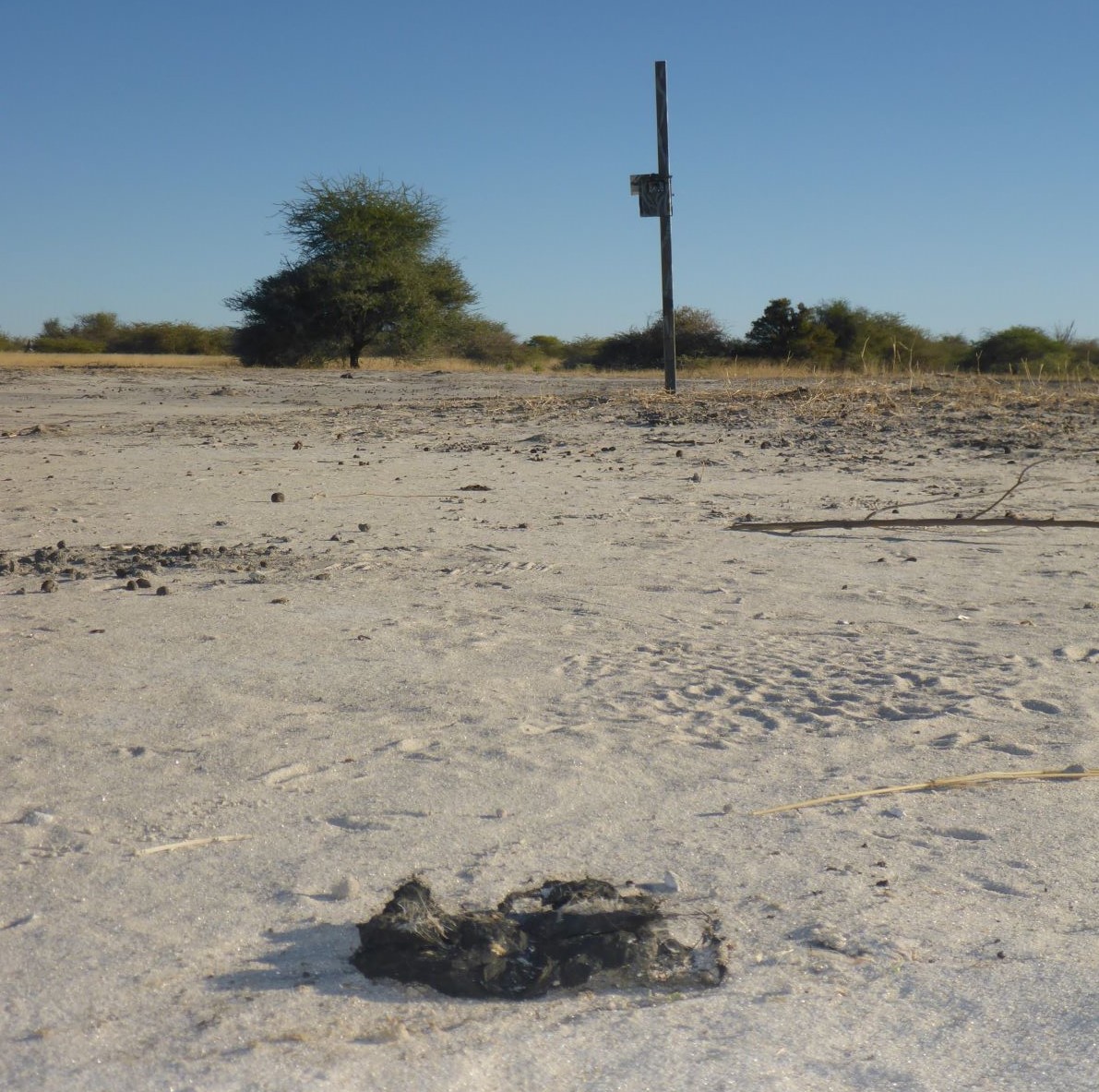
One of the camera traps funded by the St Louis Zoo WildCare Institute keeps watch over an African wild dog scat at a scent marking site, remotely monitoring return visits by wild dogs. This site was found by following two dispersing females, and has had repeat visits from those females and the resident pack
The camera at one of the new sites captured fascinating footage of a surprisingly tolerant interaction between a wild dog and two spotted hyaenas, with the spotted hyaenas rolling on the urine that the wild dog had just left at the marking site. Some of the wild dog multi-pack marking sites are also used as latrines by spotted hyaenas.
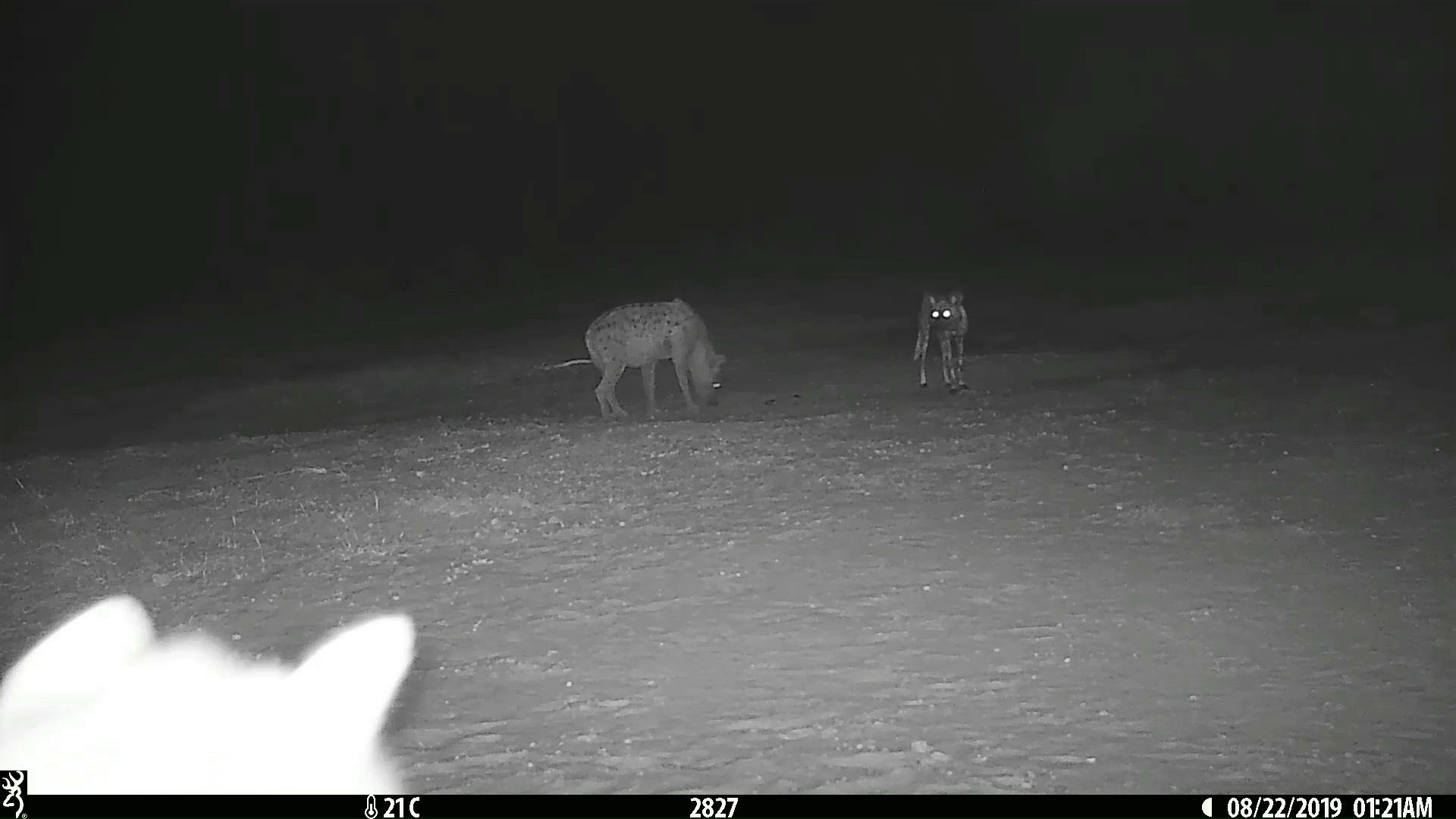
In a frame clipped from a camera trap video, Sahara, a dispersing female African wild dog, shares a marking site with two spotted hyaenas. Sahara had just urinated, and the hyaena rolled in the urine about a minute later.
Now that we can monitor multiple scent marking sites, we have discovered that dispersing wild dogs visit them at remarkably short intervals of 1 -2 days, and sometimes visit different sites on the same day. This shows how important the scent messages are. Presumably the dispersers are advertising their availability as mates and pack founders to dispersers of the opposite sex.
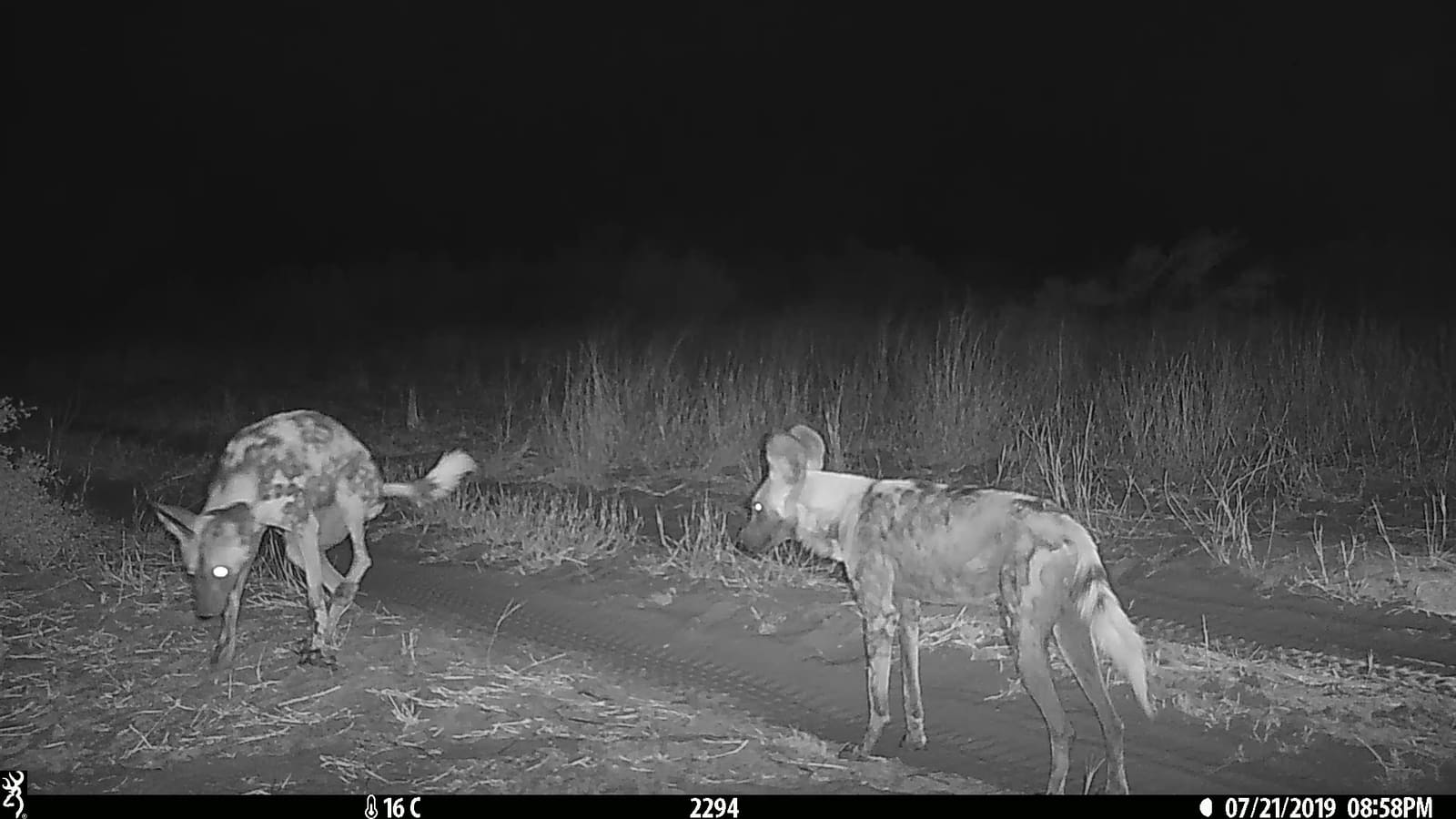
A frame clipped from a camera trap video shows two dispersing female African wild dogs at a scent marking site, the one on the left is urinating on top of faeces from other dogs’ earlier visits. These two visited multiple sites at intervals of 1-2 days.
Each camera records two or three hundred videos a week, a huge quantity of material that needs to be sorted and classified. Omphemetse (Oni) Kelaeditse has joined the team as a data processor, and works full time at the offices in Maun filtering out the videos with no animals in them.

Botswana Predator Conservation Trust data processor OniKelaeditse editing and classifying camera trap images
Because we plan to use artificial scent marks to keep wild dogs inside protected wildlife areas, the relationship between the scent marking sites and wild dog movements is critically important. When the packs were denning with this year’s pups, the tracks from their high-resolution GPS collars showed the expected spiderweb pattern of hunting trips and returns to the den, but the dogs also made long excursions, and those tracks passed right through marking sites. It really does look as if the excursions were made specifically in order to visit the marking sites and exchange scent messages with neighbouring packs. For the dogs to travel so far from a den with pups in it shows how important the scent messaging at the marking sites is.
While we continue to camera trap at the marking sites, our next steps will be to increase our high-resolution tracking of packs that use the sites, to start to experiment with scent moved between sites and to new locations, and to analyse the chemical composition of marks from the sites.
You can support this critical conservation research by a donation through the web site.
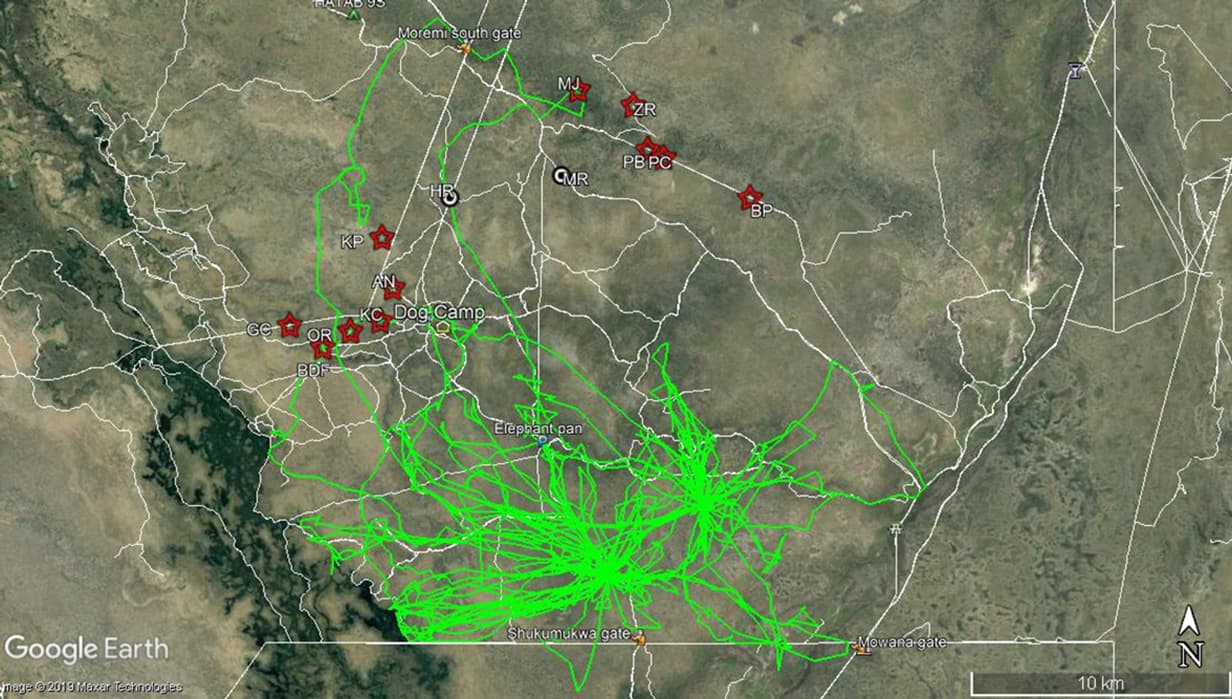
High resolution GPS tracks of Apoka pack. Most of the movements show the“spiderweb” pattern of dogs returning to the den after every hunt, but there are also long, looping excursions that pass through known marking sites shown with stars and circles, and locations where we suspect marking sites to be.

Written by
Peter Apps, PHD
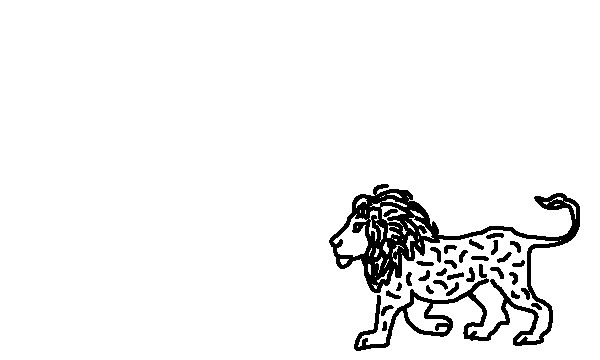

Dive straight into the feedback!Login below and you can start commenting using your own user instantly